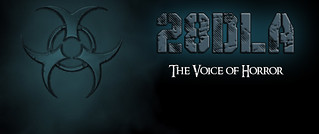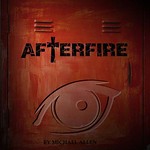Director/writer: Robert Eggers.
Cast: Anya Taylor-Joy, Ralph Ineson, Kate Dickie and Harvey Scrimshaw.
The Witch is a small, indie film from first time director Robert Eggers. The film has been screened at Sundance, in 2015. And, the film is currently receiving a wide release in North America. Set in New England, in the 1600s, The Witch focuses on a Puritan family and a supernatural denizen, which inhabits the nearby woods. Minimalist in nature, the film's conflict is reduced to accusations; the actual witch is mostly off-screen. Also, the Devil makes an appearance, but all of his sinful seductions are saved for a single scene. Characters are powerless to resist and their lack reduces any real tension. While entertaining and dark, The Witch reduces any possibility of real terror, by keeping the major players in the distant background.
A family of seven is cast out from their local, religious community. Once out in the wilderness, this family encounters all sorts of misfortunes. From a diseased corn crop to a disappearing child, the family is supposedly being tested by God. However, God is nowhere to be found. In his place, the Devil and a few of his minions are running the macabre show. This small family slowly falls under this dark beast's spell.
The Witch is minimalist on a number of film fronts. The film's budget is small, reducing the amount of characters and settings. As well, the director regulates himself in directing styles. There are a number of close-ups of the protagonist, or of exterior shots of the thatched houses, but not much else. The small central cast is limited to: the father (Ralph Ineson), mother (Kate Dickie) and the family's youngest daughter (Anya Taylor-Joy). Many of the scenes focus on the interactions between these three, exclusively. Complex shooting styles are absent and interplay between characters are kept very simple.
Conflict is almost entirely absent. Reduced to a supernatural element, which is rarely seen, the action must come from the trio, mentioned above. The supernatural element possesses one child and at least two others; its attack is never direct. This approach to conflict does not create any real sparks. Then, the climax dissipates any potential for a real confrontation. Instead, Thomasin simply enters the woods for one last shrill time. The lack of a present antagonist reduces any potential for a dire conflict.
The moral message in The Witch involves resistance. People, even the religious, are unable to resist the evil intentions of the Devil. He targets the youngest first, while focusing on the adults later. Victims are used for blood sacrifice or to perform rituals. But, why does not one single character fight back? Everyone falls like a line of dominoes, with no one courageous enough to stand up to the tragic events occurring onscreen. The protagonist does not even hesitate for a moment to bow down to the Lucifer. Though, some resistance could have created for a greater test and even better characterizations.
The Witch is a strong feature for a first time filmmaker. But, it is not a complex one. Humanity appears powerless in the face of supernatural forces. Characters and conflicts are minimized, while the finale goes off with a sputter. Eggers keeps the camera mostly still. And, most importantly, the villains are kept out of the lens, reducing the possibility of any real thrills. The conflict and antagonist are just a shadowy mist, with The Witch requiring more Macbethian "toil and trouble."
Overall: 6.5 out of 10.
A trailer for the film is available here:
The Witch Trailer on 28DLA
Subscribe to 28 Days Later: An Analysis 28 Days Later Analysis Email Subscription
Cast: Anya Taylor-Joy, Ralph Ineson, Kate Dickie and Harvey Scrimshaw.
The Witch is a small, indie film from first time director Robert Eggers. The film has been screened at Sundance, in 2015. And, the film is currently receiving a wide release in North America. Set in New England, in the 1600s, The Witch focuses on a Puritan family and a supernatural denizen, which inhabits the nearby woods. Minimalist in nature, the film's conflict is reduced to accusations; the actual witch is mostly off-screen. Also, the Devil makes an appearance, but all of his sinful seductions are saved for a single scene. Characters are powerless to resist and their lack reduces any real tension. While entertaining and dark, The Witch reduces any possibility of real terror, by keeping the major players in the distant background.
A family of seven is cast out from their local, religious community. Once out in the wilderness, this family encounters all sorts of misfortunes. From a diseased corn crop to a disappearing child, the family is supposedly being tested by God. However, God is nowhere to be found. In his place, the Devil and a few of his minions are running the macabre show. This small family slowly falls under this dark beast's spell.
The Witch is minimalist on a number of film fronts. The film's budget is small, reducing the amount of characters and settings. As well, the director regulates himself in directing styles. There are a number of close-ups of the protagonist, or of exterior shots of the thatched houses, but not much else. The small central cast is limited to: the father (Ralph Ineson), mother (Kate Dickie) and the family's youngest daughter (Anya Taylor-Joy). Many of the scenes focus on the interactions between these three, exclusively. Complex shooting styles are absent and interplay between characters are kept very simple.
Conflict is almost entirely absent. Reduced to a supernatural element, which is rarely seen, the action must come from the trio, mentioned above. The supernatural element possesses one child and at least two others; its attack is never direct. This approach to conflict does not create any real sparks. Then, the climax dissipates any potential for a real confrontation. Instead, Thomasin simply enters the woods for one last shrill time. The lack of a present antagonist reduces any potential for a dire conflict.
The moral message in The Witch involves resistance. People, even the religious, are unable to resist the evil intentions of the Devil. He targets the youngest first, while focusing on the adults later. Victims are used for blood sacrifice or to perform rituals. But, why does not one single character fight back? Everyone falls like a line of dominoes, with no one courageous enough to stand up to the tragic events occurring onscreen. The protagonist does not even hesitate for a moment to bow down to the Lucifer. Though, some resistance could have created for a greater test and even better characterizations.
The Witch is a strong feature for a first time filmmaker. But, it is not a complex one. Humanity appears powerless in the face of supernatural forces. Characters and conflicts are minimized, while the finale goes off with a sputter. Eggers keeps the camera mostly still. And, most importantly, the villains are kept out of the lens, reducing the possibility of any real thrills. The conflict and antagonist are just a shadowy mist, with The Witch requiring more Macbethian "toil and trouble."
Overall: 6.5 out of 10.
A trailer for the film is available here:
The Witch Trailer on 28DLA
Subscribe to 28 Days Later: An Analysis 28 Days Later Analysis Email Subscription


 Wednesday, February 24, 2016
Wednesday, February 24, 2016
 Michael Allen
Michael Allen




 Posted in:
Posted in: 


0 comments:
Post a Comment